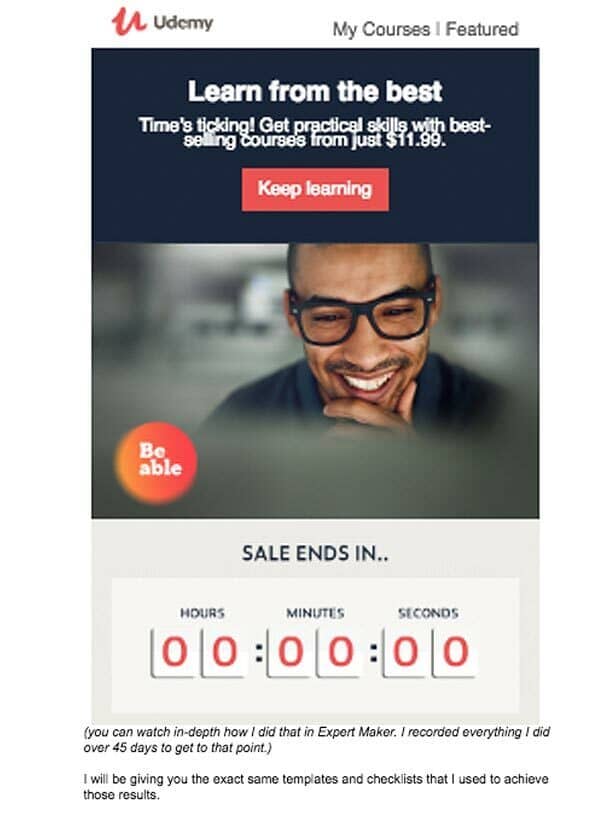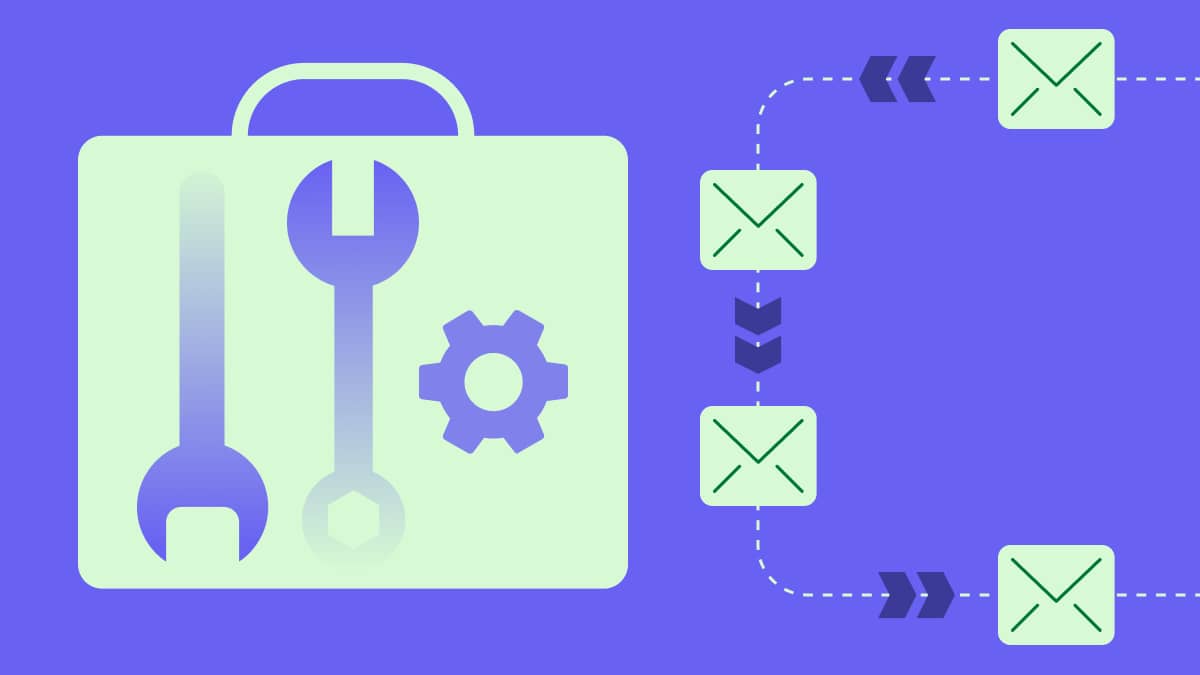You’ve been preparing for this day for a long time. You’ve spent countless hours developing your product, testing and fine-tuning it and now it’s ready to be launched.
Something unfortunate happens: Your new product launch landing page goes live on the release date, but gets an underwhelming response.
This problem is unfortunately common among entrepreneurs and businesses of all sizes.. You can have the greatest product in the world, but that doesn’t mean it will sell right away.
This scenario can be avoided with an effective product launch email campaign. In this article, we’ll share tips on how to write great product launch emails and share seven product launch email campaigns you can use in your own business.
How to write product launch emails that get opened
Product launch email copy should be engaging and persuasive as the purpose of these emails is to build anticipation and excitement about your new product or service.
Beyond hype, product launch emails give you a chance to pitch your new product to (ideally) eager listeners. Thus, you need to convince them that your product is something that they need.
Copy for product launch emails needs to pique interest, educate and excite, so it’s best accompanied with eye-catching visuals or images of the products.
The product launch email’s secret ingredient: The audience
Successful product launch email campaigns may seem simple, but there’s a lot that goes on behind the scenes.
Even the best new product emails won’t be very effective if you’re not sending them out to the right audience. Segmentation allows you to categorize your mailing or email list, such as customers who have bought from you before, customers who subscribed through a certain ad or email campaign and customers who have browsed your website.
Once you’ve segmented your mailing list, you’ll be able to send more targeted and engaging emails. You’ll also be able to gather behavioral data such as click-throughs and open rates for each segment. You can then use the information to customize your emails, resulting in a much more effective launch campaign.
7 types of product launch email campaigns
Product launch emails aren’t a one-size-fits-all kind of deal. A product launch campaign can use one or a series of emails. Here are the seven types of product launch emails you can include in the different stages of your new product release plan:
Survey email
Give email
Interest list email
Anticipation email
Offer email
Common questions email
Closing email
The product launch email sequence can vary according to your email marketing strategy, however this list can be used in this order:
1. Survey email
Typically the precursor to the actual product launch, the survey email focuses on information gathering. With a survey, you can gather valuable information from your mailing or interest lists about your potential customers such as key demographics, pain points and interests.
One of the downfalls of survey emails is that it can be difficult to get a response from your mailing list, especially if you’re new to your target audience. If you’re having difficulty drumming up replies, consider offering an incentive.
Check out what Flywheel did to incentivize their mailing list below.
Not only did they offer a gift to 25 lucky winners, but they also took the time to tell their readers what their mission is and why they do what they do to encourage subscribers with similar values to take part in their survey.

2. Give email
Like the name suggests, the give email is all about giving. The idea behind this email is that if you give your customers value, they will give you their attention (and in turn, eventually, their money). When using this kind of email, you can give away:
Free demos
Informational material such as blog posts, articles, white paper, or ebooks
Reports or infographics
Free products
Gift cards
This kind of email is a great way to build trust between you and your subscribers.
3. Interest list email
Remember how we talked about segmenting your mailing list? The interest list email is a good way to sort your master list into segmented lists to help you decide to whom you should be sending what emails.
Many people make the mistake of trying to make a sale in the interest email. Don’t think of it as a way to sell your products yet. Instead, think of it as a way to gauge your customer’s interest in your products. You can use these emails to discover what they might be interested in, then use that information in your product launch to deliver personalized emails to each segmented list.
4. Anticipation email
Anticipation emails are all about creating excitement and a sense of urgency for the official launch date. Their purpose is to hype up your product and build anticipation so your target audience is raring to buy it. This product release email strategy works, which is why the biggest brands (e.g. Apple, Nike, Samsung, Nintendo, etc.) use the same tactic: They create a story.
You may have heard the phrase, “People don’t buy products, they buy stories.” The anticipation email is similar to a teaser email that can include a sneak peek to get your audience invested in your upcoming product’s story. This can also be tied in with a social media campaign to promote your product launch day release and create more buzz.
Take a look at the email below. With the launch of his business, Frame.io, Emery Wells sent out a launch email detailing his journey as a filmmaker and how he went from there to launch his new business. Including a personal angle in the email copy makes the message stand out and stirs the reader to act.

5. Offer email
The offer email is similar to your product launch announcement email and is where you make the sale with the new product/feature release. If all of your emails up to this point have been effective, then you’ll be set up for success. However, you’ll also need to make sure that your email design is effective.
Effective offer emails utilize successful sales techniques such as selling benefits and limited-time or exclusive pricing offers to certain segments of customers. They can also offer early access or beta subscription for early birds who pre-order or get on the waitlist. Choose the sales tactics that fit your business model and then mold them into an offer email for each segment of your mailing list.
Take a look at this email from Grammarly. As far as offer emails go, this is a fantastic example. It utilizes classic sales techniques such as focusing on benefits over features, offering a limited-time discount and including a call-to-action button that’s easy to see.

6. Common questions email
Think of common questions emails as an FAQ of sorts. It showcases your knowledge and authority by answering inquiries that your customers might have about your product, product line or company. These types of follow-up emails are great for a product launch because:
They provide social clout. By sending out a common questions email, it gives off the impression that you have plenty of customers asking you questions. You can also include testimonials from existing customers as a form of social proof.
They answer questions. You build trust and credibility by answering common questions that potential or new customers may have. This is a good way to build a lasting customer relationship.
They free up your time and resources. How many emails do you get asking the same question, over and over again? Sending an FAQ is an efficient way to address typical questions received by your customer service team so they have more time for other tasks.
7. Closing email
Congratulations, you‘ve made it to the end of your product launch campaign! Use the closing email as a follow-up to your new product announcement to remind your customers that your product is in high demand and that any discounts or limited-time offers are coming to an end.
Udemy offers a great example of a closing email for their online courses and webinars. They provide a timer countdown to the end of the sale so customers feel motivated to buy. They also include images about the course, a noticeable CTA button and a reminder of their original sale.

Final thoughts
A successful product launch email campaign is a process.
Keep in mind when planning out your product launch that every email is as important as the next. Put these seven email types to good use and draw inspiration from our handpicked product launch email examples.
Remember to design good email subject lines and headers to create interest and engagement with every new product email you create. Follow these email templates and best practices and you’ll be well on your way to a successful and high-quality product launch campaign.



